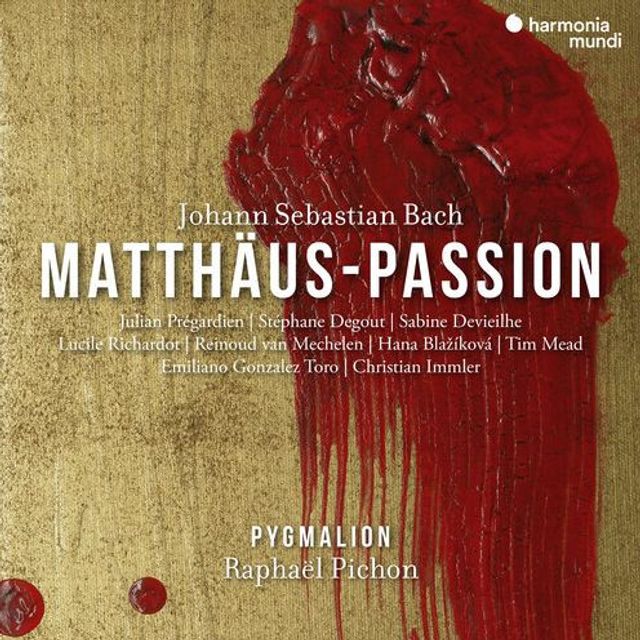Home
Hearing Bach's Passions
Loading Inventory...
Barnes and Noble
Hearing Bach's Passions
Current price: $42.99


Barnes and Noble
Hearing Bach's Passions
Current price: $42.99
Loading Inventory...
Size: Paperback
*Product Information may vary - to confirm product availability, pricing, and additional information please contact Barnes and Noble
Johann Sebastian Bach's two surviving passions
St. John
and
St. Matthew
are an essential part of the modern repertory, performed regularly both by professional ensembles and amateur groups. These large, complex pieces are well loved, but due to our distance from the original context in which they were performed, questions and problems emerge. Bach scholar Daniel Melamed examines the issues we encounter when we hear the passions performed today, and offers unique insight into Bach's passion settings.
Rather than providing a movement-by-movement analysis, Melamed uses the Bach repertory to introduce readers to some of the intriguing issues in the study and performance of older music, and explores what it means to listen to this music today. For instance, Bach wrote the passions for a particular liturgical event at a specific time and place; we hear them hundreds of years later, often a world away and usually in concert performances. They were performed with vocal and instrumental forces deployed according to early 18th-century conceptions; we usually hear them now as the pinnacle of the choral/orchestral repertory, adapted to modern forces and conventions. In Bach's time, passion settings were revised, altered, and tampered with both by their composers and by other musicians who used them; today we tend to regard them as having fixed texts to be treated mith respect. Their music was sometimes recycled from other compositions or reused itself for other purposes; we have trouble imagining the familiar material of Bach's passion settings in any other guise.
Melamed takes on these issues, exploring everything from the sources that transmit Bach's passion settings today to the issues surrounding performance practice (including the question of the size of Bach's ensemble). He delves into the passions as dramatic music, examines the problem of multiple versions of a work and the reconstruction of lost pieces, explores the other passions in Bach's performing repertory, and sifts through the puzzle of authorship.
Highly accessible to the non-specialist, the book assumes no technical musical knowledge and does not rely on printed musical examples. Based on the most recent scholarship and using lucid prose, the book opens up the debates surrounding this repertory to music lovers, choral singers, church musicians, and students of Bach's music.
St. John
and
St. Matthew
are an essential part of the modern repertory, performed regularly both by professional ensembles and amateur groups. These large, complex pieces are well loved, but due to our distance from the original context in which they were performed, questions and problems emerge. Bach scholar Daniel Melamed examines the issues we encounter when we hear the passions performed today, and offers unique insight into Bach's passion settings.
Rather than providing a movement-by-movement analysis, Melamed uses the Bach repertory to introduce readers to some of the intriguing issues in the study and performance of older music, and explores what it means to listen to this music today. For instance, Bach wrote the passions for a particular liturgical event at a specific time and place; we hear them hundreds of years later, often a world away and usually in concert performances. They were performed with vocal and instrumental forces deployed according to early 18th-century conceptions; we usually hear them now as the pinnacle of the choral/orchestral repertory, adapted to modern forces and conventions. In Bach's time, passion settings were revised, altered, and tampered with both by their composers and by other musicians who used them; today we tend to regard them as having fixed texts to be treated mith respect. Their music was sometimes recycled from other compositions or reused itself for other purposes; we have trouble imagining the familiar material of Bach's passion settings in any other guise.
Melamed takes on these issues, exploring everything from the sources that transmit Bach's passion settings today to the issues surrounding performance practice (including the question of the size of Bach's ensemble). He delves into the passions as dramatic music, examines the problem of multiple versions of a work and the reconstruction of lost pieces, explores the other passions in Bach's performing repertory, and sifts through the puzzle of authorship.
Highly accessible to the non-specialist, the book assumes no technical musical knowledge and does not rely on printed musical examples. Based on the most recent scholarship and using lucid prose, the book opens up the debates surrounding this repertory to music lovers, choral singers, church musicians, and students of Bach's music.


















